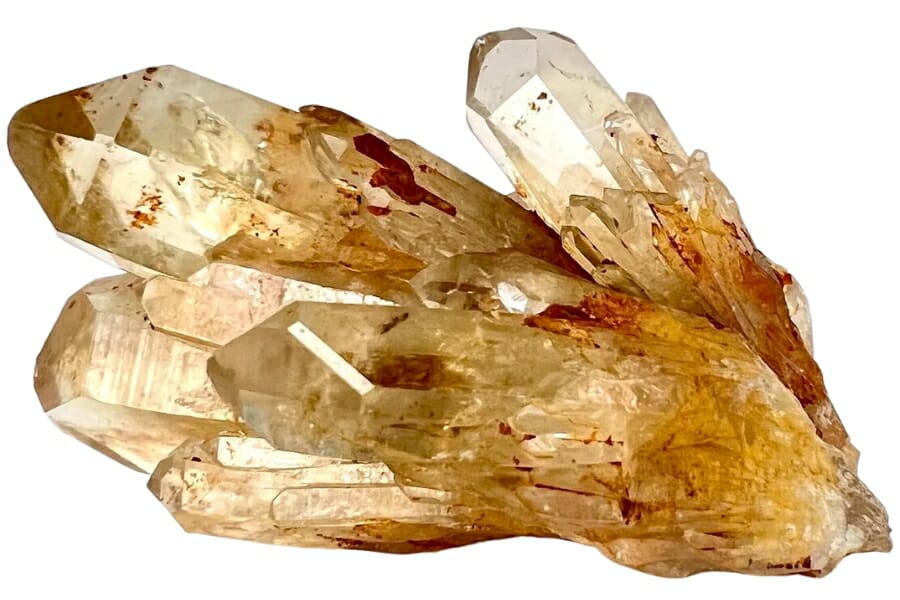Citrine’s clear yellow-to-brownish colors draw admiration from both gem lovers and geologists. It’s known as the “merchant’s stone” because it’s linked to wealth and abundance.
People want it for its durability and ability to be used in various jewelry designs. This gemstone gets its unique color from iron ions and natural radiation irradiation within quartz crystals.
It’s mostly found in igneous and metamorphic rocks, and its presence has been a delightful discovery for many gemstone collectors and enthusiasts.
You don’t have to go on your quest to find your citrine alone. This article is an all-around guide to citrine in the United States, with specific information on where and how to get it.
We’ll talk about everything you need to find this gem! Our guide is here to help you on your quest to find your sunny piece of citrine.
What is Citrine?
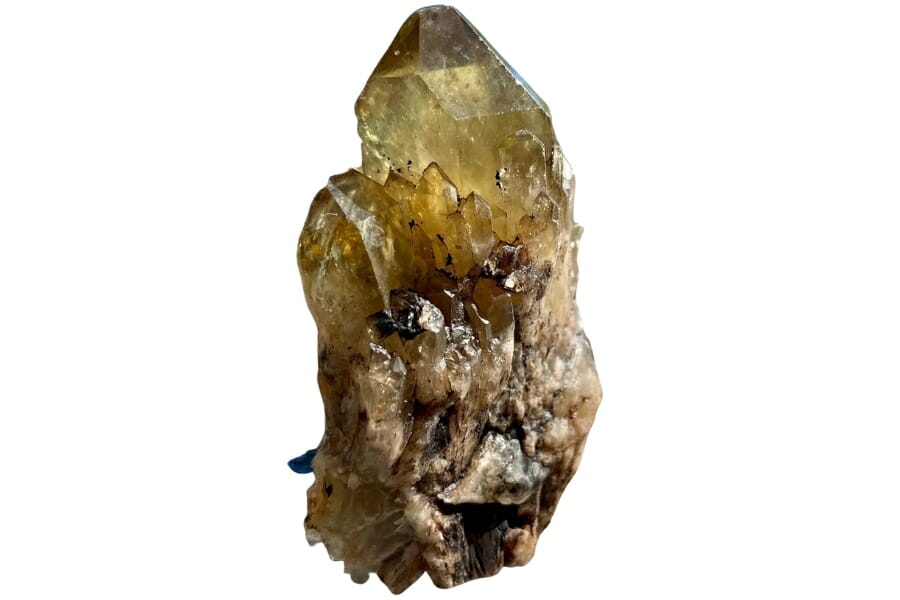
Citrine is a clear, yellow type of quartz whose shades of pale yellow can be identified as brownish-orange. This gem is found in igneous and metamorphic rocks, mostly granite and gneiss.
It’s made chiefly when iron-containing elements are added to growing quartz crystals by natural geological processes that use heat and pressure. Natural citrine is hard to find and is usually found in quartz veins.
Most citrine sold in stores is made from amethyst or smoky quartz that has been heated. There are important deposits in Brazil, Madagascar, and the Ural Mountains in Russia. There are also deposits in the United States, especially in North Carolina and Colorado.
The different types of Citrine
Citrine is a stunning type of quartz that is loved for its sunny colors, which range from lemon yellow to reddish brown. There are different kinds of this gem.
Each type has its appeal for collectors and enthusiasts, thanks to the way it was formed and where it came from. We’ll enumerate it below.
Ametrine
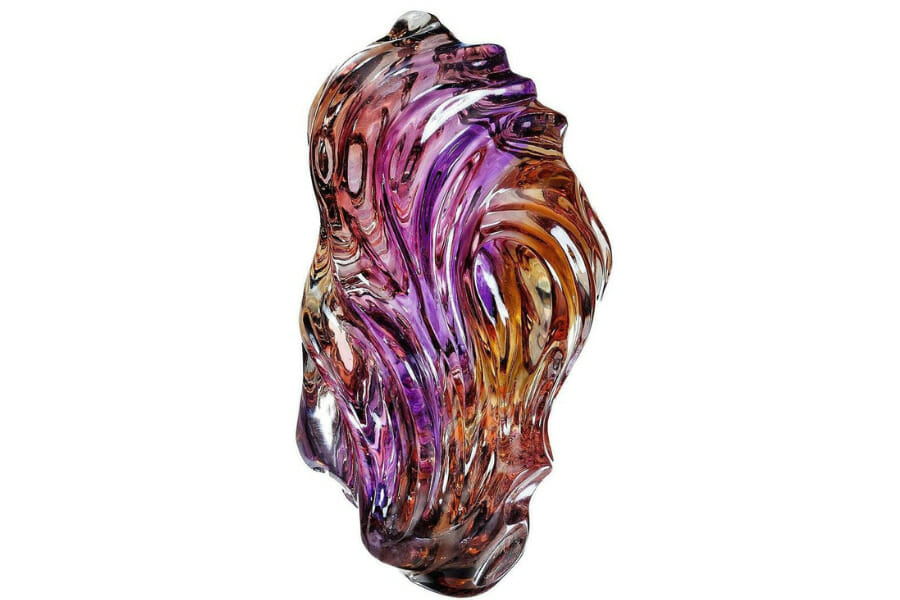
Crystals of ametrine, a rare type of naturally occurring quartz, have two different colors in one crystal. The colors are purple and yellow. The beautiful color comes from the amethyst and citrine being in the same stone.
These two minerals usually form in different areas, making a stunning contrast. The Anahí Mine in Bolivia is the world’s most important source of ametrine because it has the special conditions needed to form it.
While citrine, especially heat-treated forms, is easy to find and comes from many places worldwide, real ametrine is still hard to find, making it more valuable and appealing to gem lovers.
Golden Citrine
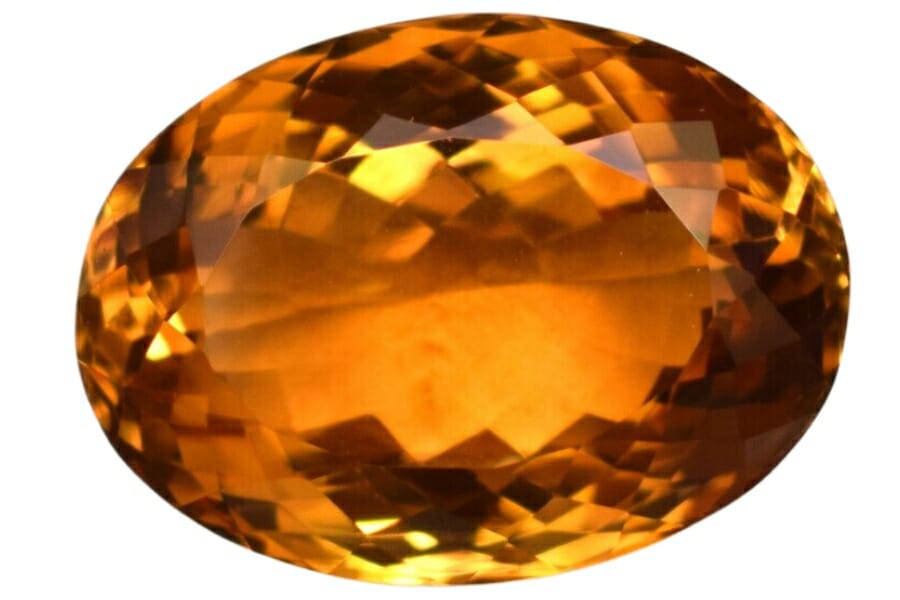
Among the more common types of citrine, golden citrine stands out because of its beautiful deep golden-yellow color. People often say this stone’s color resembles the sun or golden honey.
It has a depth and saturation you don’t see in regular citrine. Citrine usually comes from Brazil, Madagascar, and Russia. But golden citrine is more challenging to find because it needs special geological conditions to have such a deep color naturally.
This makes it more valuable and rare. A lot of the golden citrine on the market comes from heating amethyst, especially in places like Rio Grande do Sul, Brazil.
Lemon Citrine
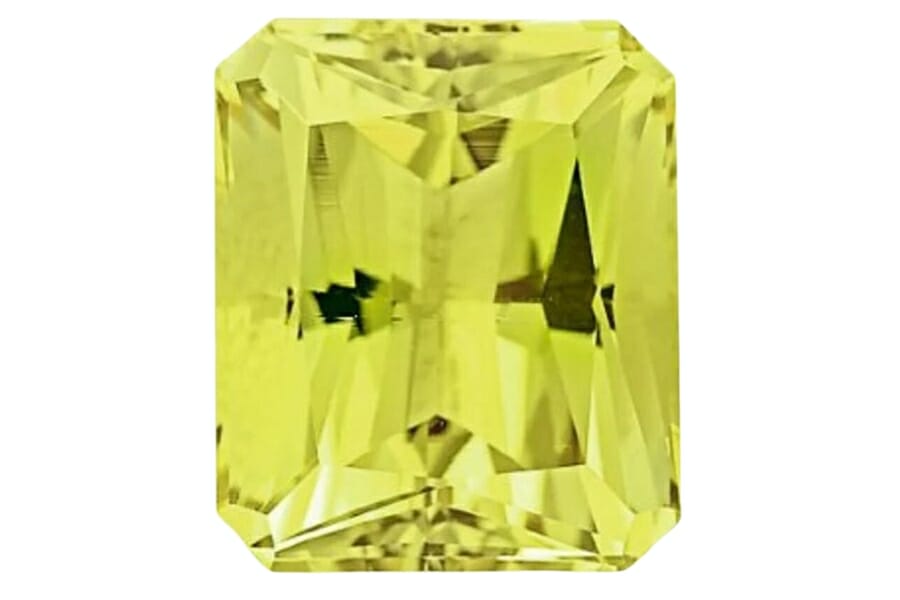
The bright lemon-yellow color of lemon citrine makes it look lighter and more lively than the deeper golden colors of common citrine. This color is less intense and is often considered more subtle and elegant.
Standard citrine is easy to find and usually comes from Brazil, Madagascar, and Russia. On the other hand, Lemon citrine is only found in certain quartz mines with the right trace elements and conditions to make it its unique color.
Because of its clear, cool yellow color, lemon citrine is a popular gem for jewelry. Its sunny, positive vibe is also liked.
Madeira Citrine
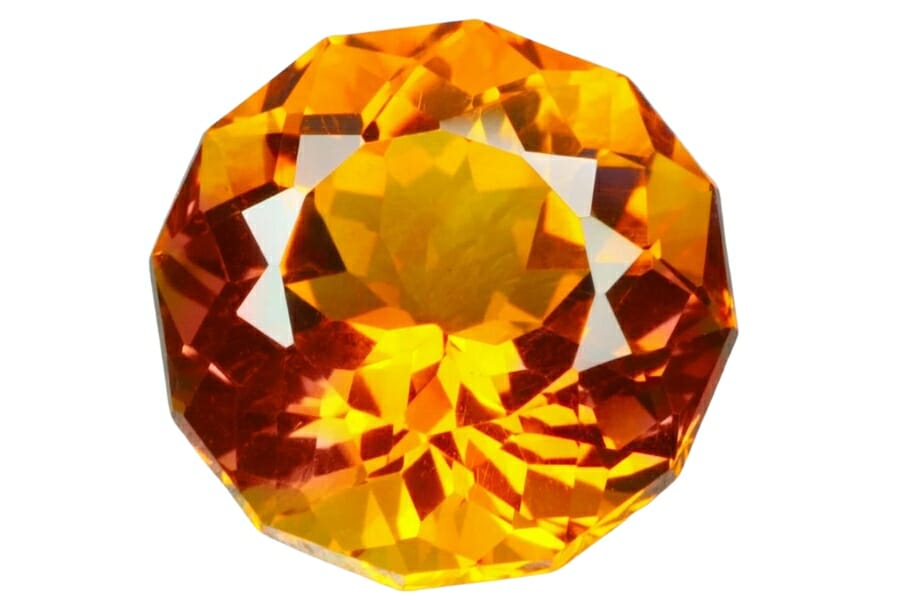
The deep orange or reddish-brown color of Madeira citrine is very unique. It looks a lot like the color of Madeira wine, which is where its name comes from. This type of citrine is not as common as the common yellow citrine.
It’s known for having a deeper, more captivating color that looks stunning, especially when used in jewelry. Regular citrine is easy to find in Brazil, Madagascar, and Russia.
But Madeira citrine, with its unique and intense color, isn’t found as often in nature. The signature rich color of Madeira citrine comes from carefully heating amethyst or smoky quartz, mostly from mines in Brazil. This is how most of the gems on the market are made.
Pale Yellow Citrine
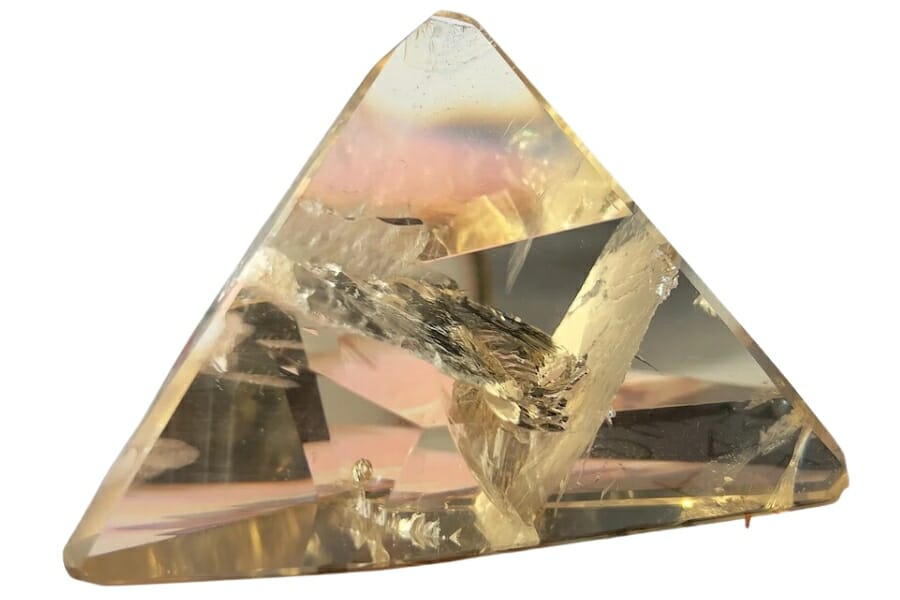
The delicate, almost ethereal yellow color of pale yellow citrine differs from the bright colors of other types of citrine. Its soft color is often linked to a sense of peace and clarity, and jewelry and home decor items with that look are especially popular.
Standard citrine, usually a deeper color, comes mostly from Brazil, Madagascar, and Russia. The pale yellow variety can also be found in these places, but it needs certain conditions to be that color.
This type is usually closer to its natural state because it hasn’t been exposed to as much natural or artificial heat, which usually makes the color deeper. This makes it a rare find for collectors.
Where to find Citrine
You can go on an exciting adventure and learn about the geology of the United States by going on a quest to find citrine.
This section will show you important places known to have citrine deposits, increasing your chances of finding your piece of this golden gem.
Ouachita Mountains, Arkansas
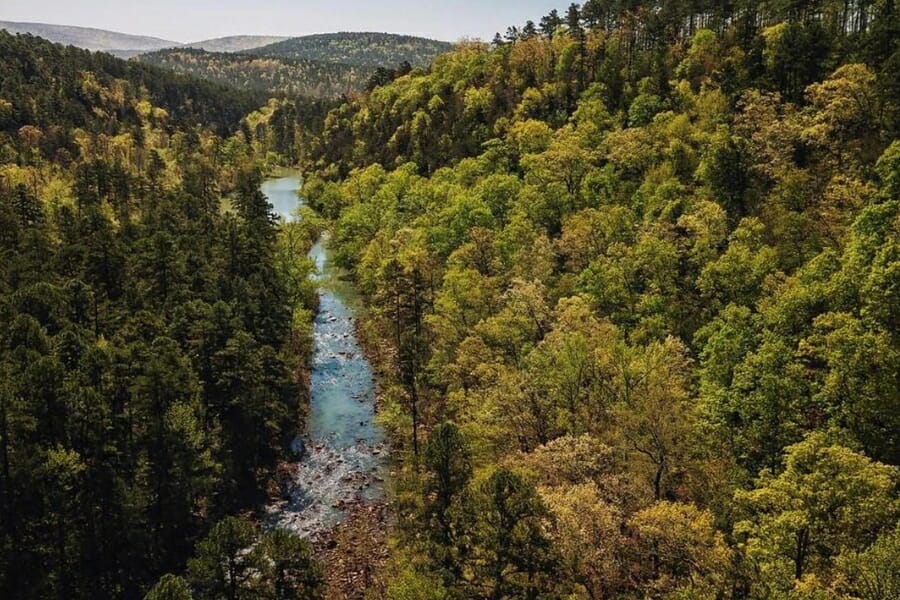
The Ouachita Mountains in Arkansas are a good place for people looking for citrine because they are known for having large deposits of quartz crystals.
While clear quartz crystals are more common here, citrine specimens, especially those with a lighter, pale yellow color, have been found because the iron-rich sediments in the rock make them more likely to form.
In these mountains, especially near Mount Ida, there are public mines where gem hunters can look for loose stones. Most of the citrine here is natural and hasn’t been treated in any way.
This gives it a more natural and authentic look than the heat-treated varieties that are more common in stores.
Pike’s Peak, Colorado
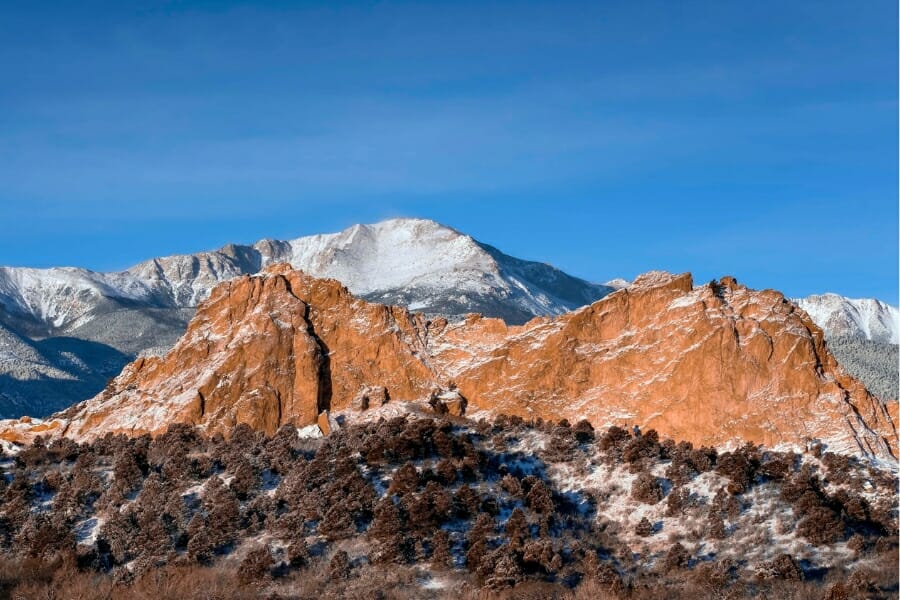
Pike’s Peak, Colorado, is renowned for its rich abundance of minerals, making it a hotspot for gem collectors and enthusiasts.
The area’s unique geological makeup, characterized by granite pegmatites, is conducive to forming various quartz varieties, including citrine. The citrine crystals found here tend to be of the natural type, ranging from pale yellow to a more prosperous, honey-gold hue, often located in cavities within weathered granites.
While citrine is less common than other quartz varieties in the area, diligent prospectors around Pike’s Peak can be rewarded with high-quality specimens, prized for their rarity and natural beauty.
Sawtooth Mountains, Idaho
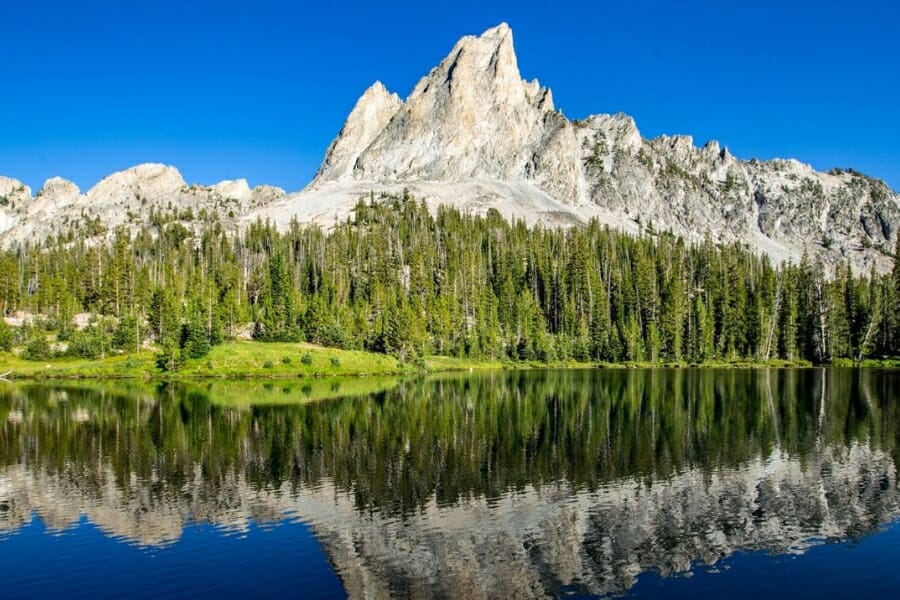
Because it has a lot of different mineral deposits and a long geological history, Sawtooth Mountain in Idaho is a great place to find many gemstones, including citrine.
Because of the area’s unique mix of volcanic and hydrothermal activity, quartz crystals, such as citrine, have formed in its rough landscapes.
These citrines range from lemon-colored citrines that are very pale to deeper amber-colored natural citrines that are often found in quartz veins or as parts of larger mineral formations.
Even though citrine isn’t as common as some other gemstones in the area, it makes Sawtooth Mountain more appealing to gem collectors and nature lovers.
Thomas Range, Utah
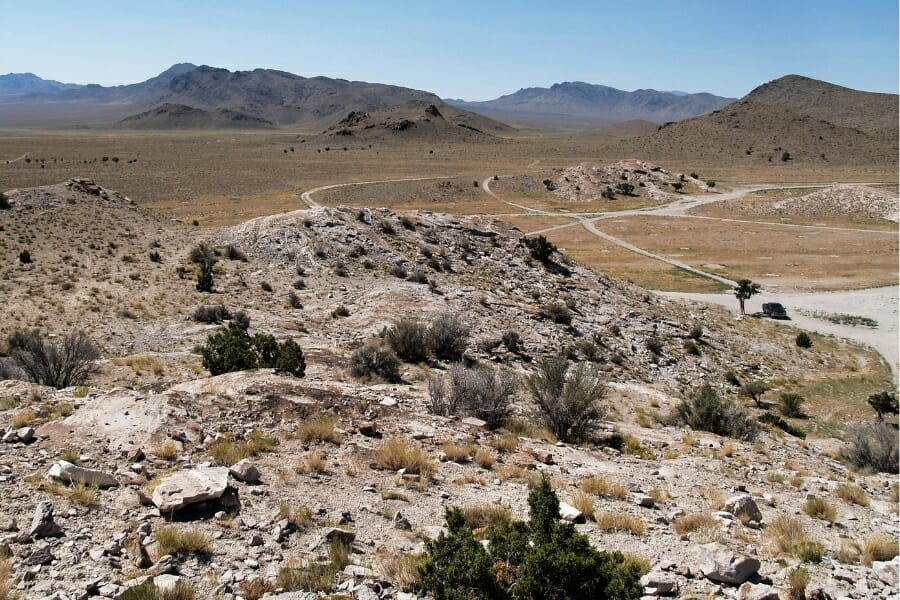
People who like rocks love Utah’s Thomas Range because it has many minerals, including the valuable topaz and red beryl. In addition, it’s a notable place for people who are looking for citrine.
It’s easy for different types of quartz, including citrine, to crystallize in this area because of its volcanic rhyolite formations. From light, almost clear yellow, which shows how subtle lemon citrine is, to richer gold tones, this is where citrine is often found.
Compared to the more common minerals in the area, citrine isn’t as easy to find. However, collectors enjoy finding it, especially those who like the way it looks when it’s not heated.
Yellowstone National Park, Wyoming
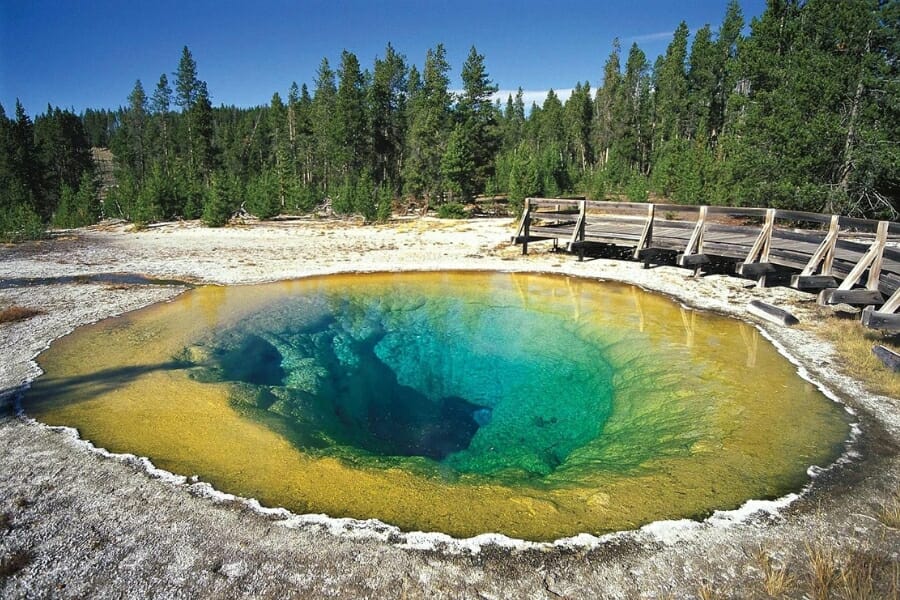
Yellowstone National Park in Wyoming, famous for its geothermal features and diverse wildlife, also sits atop an ancient volcanic caldera, leading to a rich geological foundation.
While mineral collection within the park is prohibited to preserve its natural state, the surrounding areas are known to harbor a variety of gemstones, including citrine.
The types of citrine in these locales range from the pale, almost clear hues to the deeper, amber-colored specimens, often found within quartz veins or in volcanic rock deposits.
The park’s peripheral regions attract gem enthusiasts and rockhounds for both the potential of citrine finds and the breathtaking natural beauty.
How to find Citrine
Finding citrine is a fun and rewarding activity that attracts both new and experienced gem collectors.
In this section, we’ll show you useful and interesting ways to find citrine, which will make your gem-hunting trip a success and a learning experience.
Check the color
The color of citrine is very important for telling it apart from other minerals and finding more of it in a certain place. Citrine is a type of quartz that can be any color from a light lemon yellow to a deep earthy brown.
Its unique color comes from iron atoms in its crystal structure. Natural citrines tend to have lighter colors, while citrines that have been heated and were originally amethyst or smoky quartz have darker, more orange colors.
When in the field, use the color as a guide. Areas rich in quartz crystals, especially those with iron deposits, increase the likelihood of finding citrine.
Inspect crystal shape
Citrine crystals are hexagonal, which means they have six sides. The ends, or tips, are often shaped like pyramids, and the crystal faces can be smooth or have lines running across them.
This shape is a very important clue when looking for citrine. If you find a place with a quartz crystal, especially one with the golden tones of citrine, this could mean that there are citrine deposits nearby, since quartz crystals tend to form in groups or veins.
Citrine crystals can also be found attached to a host rock (a matrix) or as double-ended specimens that form in pockets of clay or decomposed sediment.
Test the hardness
Testing citrine’s hardness is a useful way to tell it apart from other quartz varieties since citrine has a Mohs hardness of 7. This means it will last a long time and won’t get scratched by softer things.
A pocket knife or a piece of glass can be used for a scratch test in the field (both have a Mohs hardness of about 5.5). Lemon quartz should be able to scratch metal or glass without getting scratched itself.
Finding a place where the stones are this hard can be a sign of a quartz-rich area, which makes it more likely that citrine is present.
How to identify Citrine once you find it
Gems like citrines are unique because they are different from other stones in many ways. Let’s talk about how to find a carnelian among other stones.
What Citrine looks like on the outside
On the outside, different kinds of citrines can look very different. These are the main things you should look for:
Luster
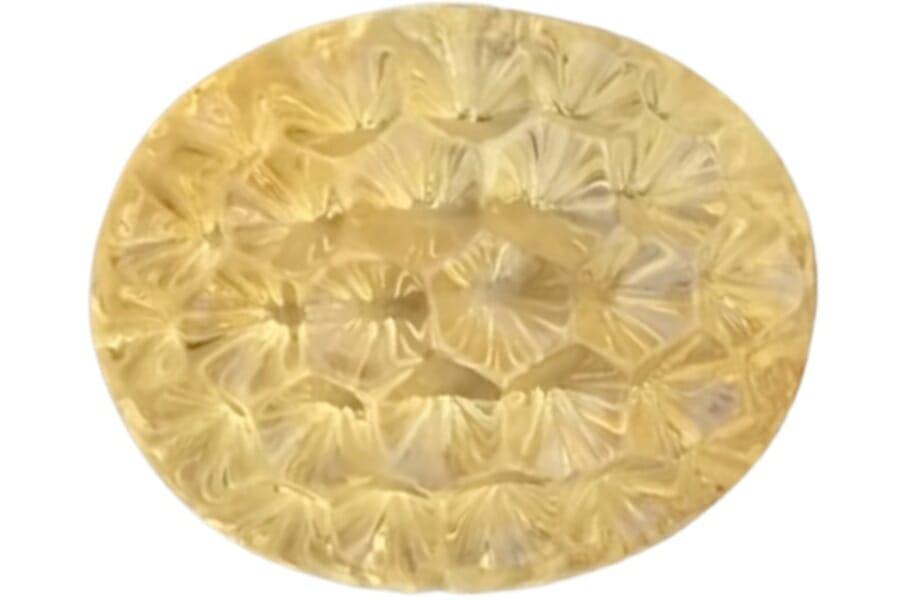
On the outside, rough citrine has a vitreous shine that makes it look like a piece of glass. It’s possible that citrine won’t have the bright shine that it was known for when it was first discovered.
Instead, it might look more muted and glassy, and it might feel a little waxy. One reason for this is that crystals naturally have flaws on their surfaces and a “skin” that forms over time that may hide their true shine.
It’s common for the outside of rough citrine to have a little cloudiness or inclusions that make the stone look less clear or even opaque. Still, citrine has a unique sparkle that shines through even when it’s rough.
This sparkle is even more noticeable when the stone is polished or cut into shapes. You can also tell a lot about a stone’s purity and quality by how shiny it is. For example, clearer, higher-quality citrine has a stronger vitreous sheen even when it’s rough.
Shape and structure
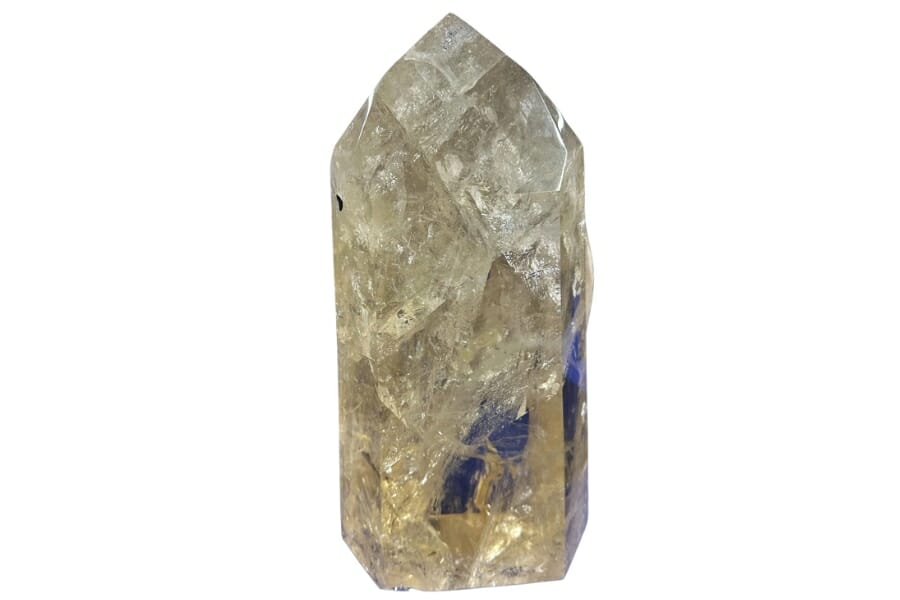
When it is in its purest form, rough citrine is a fascinating example of the geometry and structure of living things. In its normal form, it looks like hexagonal prisms with pyramidal ends, which is typical of other quartz family members.
These crystals can be long and thin, or short and thick. They can also be found as single points or more often as groups with several points jutting out from a central base.
The ends of the crystals are smoother than the sides, which are often striated horizontally with ridges and grooves running along the length of the crystal. It’s common for rough citrine to have flaws like inclusions, fractures, or even other minerals growing on it.
These flaws add to its natural beauty. These rocks may also have a drusy look, which is when tiny crystals form on top of a bigger rock and make it look like sugar. The rough outside, which hasn’t been changed by humans, shows off the natural beauty and complexity of citrine’s crystalline structure.
Transparency

Citrine’s level of transparency can vary a lot depending on how it was formed and whether it has any impurities or inclusions inside it.
Citrine is clear and see-through when it’s at its purest, and you can see the yellow to brownish colors running through the whole crystal.
However, natural rough citrine may also have a level of translucency, which means that light can pass through it but things can’t be seen clearly. This often happens with specimens that have small cracks inside or inclusions that are very close together.
It’s possible for some rough citrines to be almost clear, especially in stones that have a lot of impurities or are grouped together tightly. No matter how clear it is, rough citrine usually gives off a warm, inviting glow when light hits its surface.
What Citrine looks like on the inside
Citrines don’t always look the same on the inside and outside. The inside is usually brighter or more focused. You can see the following:
Clarity
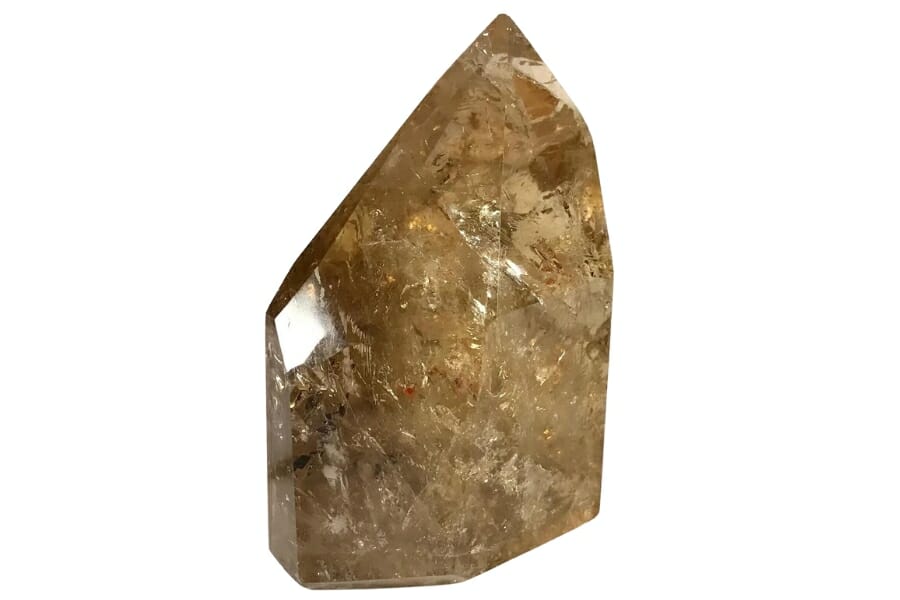
When you look at rough citrine from the inside, the clarity ranges from being perfectly clear to having a lot of other things inside it.
Citrine of high quality can have very clear insides, almost like glass, with few or no inclusions that can be seen with the naked eye. This lets light pass through without any problems, bringing out the stone’s pure, bright color.
But a lot of citrine specimens have a lot of different things inside them, like tiny cracks called “feathers,” fluid or gas inclusions, and even tiny bits of other minerals. These things can make a stone less clear, but they also give it a unique look and tell a geological story.
In gemology, clarity is often linked to value. But in natural crystals, inclusions can be seen as proof of identity and authenticity, and they all add to the piece’s unique beauty.
Inclusions
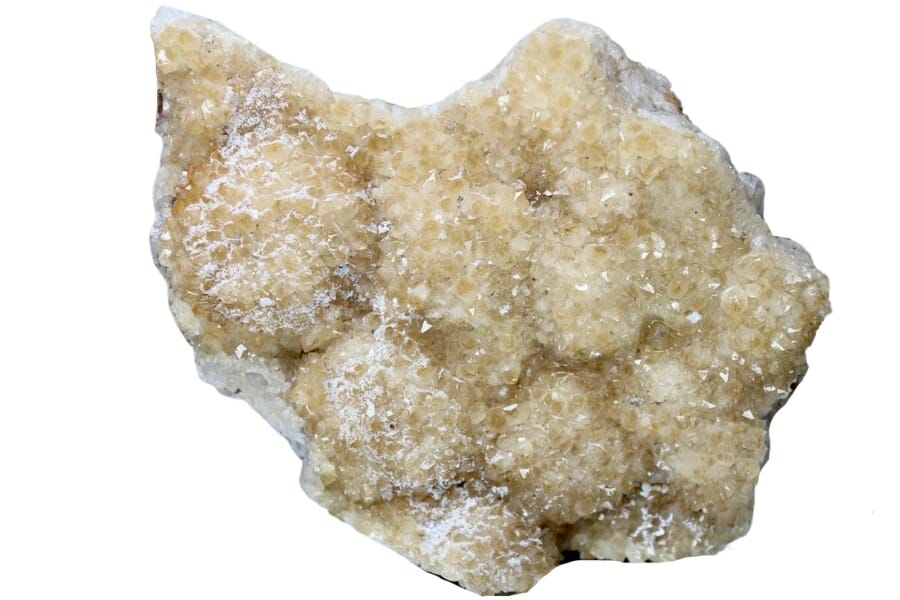
There are hidden stories inside rough citrine about how it got from molten earth to gemstone. Some of these natural features are phantoms, which are the ghostly shapes of other minerals that show that the crystal’s growth has stopped.
A shimmering effect is caused by rutile needles, which are another possible inclusion. There may also be fluid inclusions, which are small pockets of liquid that got stuck inside the crystal while it was being formed.
Another possibility is that hematite or iron particles are inside the citrine, giving it its own color. These inclusions not only change the way citrine looks and how clear it is, but they also leave behind fingerprints of the place where it formed, making each piece unique and adding to the mineral’s natural appeal and geological interest.
Refractive index
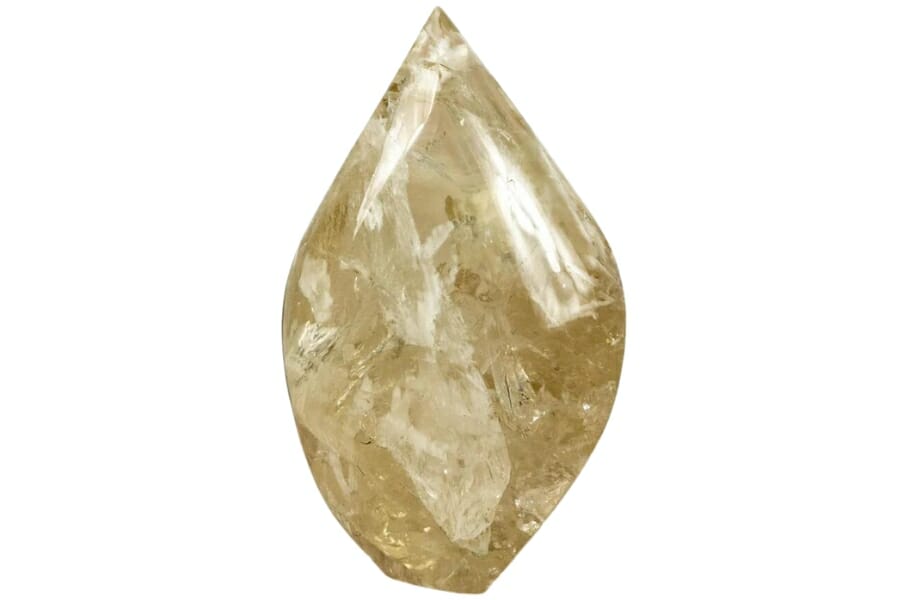
The refractive index (RI) of citrine is a measure of how light bends as it enters the stone. It doesn’t change the stone’s appearance, but it is an important property that makes it shine and be bright.
Citrine is a type of quartz, so its refractive index is between 1.544 and 1.553. Because all types of quartz are made of silicon dioxide, this range is pretty consistent across all of them.
Rough citrine doesn’t have a RI that can be seen, but it does affect how light interacts with the crystal’s internal structures, which in turn affects how we see its sparkle and depth.
Light that comes into citrine is slowed down and redirected. This bending and refraction of light brings out the stone’s internal clarity or inclusions and color intensity, which is what makes citrine so appealing.

